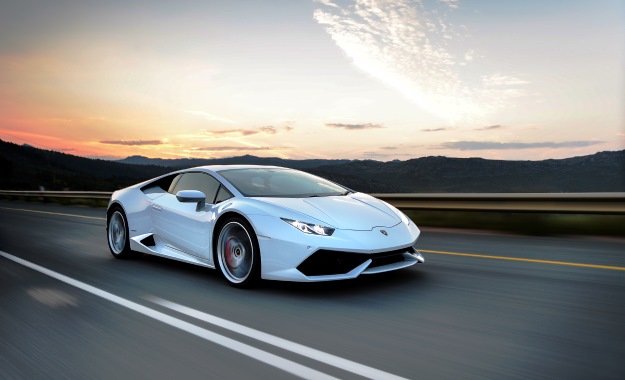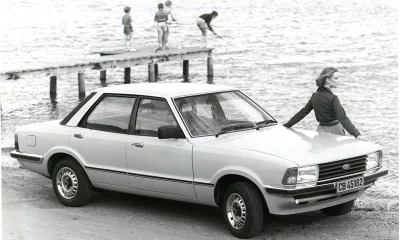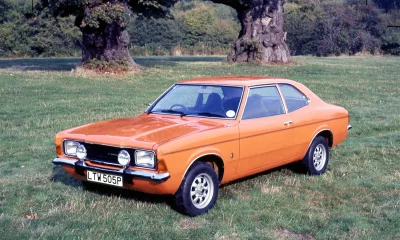That red flap – the one used to protect a switch from accidental activation is usually found in a jetfighter’s cockpit or the arming mechanism of a nuclear weapon. The Lamborghini Hurácan now joins this elite list and, as is the case with the first two, the button is linked to giant-slaying potential.
Along with an air-to-air rocket and an intercontinental ballistic missile, such a flap guards the start button of a Hurácan’s 449 kW 5,2-litre V10. Dare to flip the flap to press the ominous button and the primeval beast behind your shoulder awakens with eyes gleaming and smoke billowing from its nose. Prod the accelerator and a fireball licks from its mouth. Your sweaty palms grip the steering wheel and a tingle runs down your spine before the supercar has even moved an inch – a Lambo has this effect on its driver…
To place this product in context, the Huracán replaces the much-loved Gallardo that had a production run of 10 years. To say the newcomer has big shoes to fill is a massive understatement; the Gallardo was the volume seller for the company by a large margin.
However, the world has moved on since the Gallardo’s heyday. Everyday usability is now as important as outright speed, and “efficiency” – a word once disassociated with the segment – has entered the equation. What’s more, supercar drivers still want to be thrilled, but without risking colossal insurance claims. And then there are cars such as McLaren’s 650S that have breadths of performance and driveability that would have caused Lamborghini’s engineering team nightmares.
But the Italian carmaker’s riposte has been unequivocal. The Huracán’s shape may look awkward from some angles in pictures, but in the metal it is a stunner. The styling is a big departure from the classic Gallardo shape – it’s much more aggressive and striking. Clearly, some styling cues come from its big brother, the Aventador LP700-4, and specials like the Reventón have been transposed onto the compact Huracán, but it has a distinct persona. Although white is probably not the most flattering paint finish, the car managed to grab the attention of the public like no other. It was impossible to stay anonymous and the driver (now rock star) had to answer a barrage of questions whenever the car was stationary.
On the inside, the cabin is a big step up from that of the Gallardo. The hexagon-design theme is taken to the extreme and extends to the airvents, infotainment button surrounds, speaker covers, instrument binnacle and steering-wheel centre. The LCD display unit is one of the best in quality and resolution we’ve experienced, and remains readable during bright sunlight.
The cabin does have a few failings that have no place in a near-R5 million car, including cheap-feeling plastic on the infotainment buttons and the airvent surrounds. The fact that the wiper and indicator stalks have been replaced with
steering-wheel buttons to free up space for larger shift paddles is laudable, but they are fiddly to operate.
Most complaints from the team were, however, aimed at the driving position. Somehow, it was difficult to get comfortable and taller testers found that their scalps would easily graze the headliner. Visibility is compromised, especially to the
rear through the louvres, but obviously this is not a VW Golf. The “boot” under the bonnet is tiny and light packing for any lengthy trip would be necessary. Was it not for the fact that we piloted the 650S and its almost-perfect ergonomics, the flaws would not have been so evident.
But the niggles dissolve as soon as you floor the loud pedal. During the video shoot (which you can watch on CARmag.co.za), we filmed the car in full flight on a tight mountain pass, and the sound of 10 cylinders screaming in unison under load with unburned fuel creating pops and burbling on the overrun was the stuff of dreams. The echoes that reverberated from the cliff faces would have made even the most ardent environmentalist smile.
In terms of its powertrain, the Huracán is unique in this segment thanks to a large-capacity, naturally aspirated unit (now featuring direct and indirect injection) coupled to an exemplary seven-speed, dual-clutch transmission sending power to all four wheels. Stringent emission standards and a push for efficiency make naturally aspirated engines a dying breed. Rivals such as McLaren and neighbouring firm Ferrari have embraced turbocharging (the latter is set to release a forced-induction 458 in the near future).
This gem of a V10, therefore, is something to be savoured. Although it lacks the ultimate low-down punch of a turbo engine, it compensates with its sonorous nature and the creamy way it rushes towards the redline when given the chance.
The driver has the option of switching between three modes via the Anima switch on the steering wheel: strada, sport and corsa. With the exhaust noise muffled, suspension set to comfort and the gear shifting ultra smooth, strada is perfect for tootling in town or devouring long distances on the motorway. In this setting, the ride is so good that cruise control felt amiss.
The sport setting opens the exhaust flaps, stiffens the steering and suspension, and alters the torque split (moves it more towards the rear). Day-dreaming is now a thing of the past as full concentration is needed. Most testers found this the best mode – not too aggressive in its damper and steering setup, but with full aural drama.
Corsa mode is even more aggressive and is meant mainly for track use. In this setting, the driver is forced to use manual gear shifts as the automatic option is not available. This highlighted the free-revving nature of the engine as we hit the limiter several times thanks to slow reactions on the right-shift paddle. An odd omission, however, is the ability to configure each mode to the driver’s preference.
On the test strip, we followed the launch-control sequence and, with the angry V10 hovering at around 4 000 r/min, the words “Thrust mode possible” appeared on the instrument cluster. What followed resembled a jetfighter leaving an aircraft carrier. Each gearshift felt like a jab to the guts delivered by a boxer. The result to 100 km/h? 3,20 seconds… The Huracán ties with the previousgeneration Porsche 911 Turbo as the fastest vehicle to the three-figure mark we’ve ever tested. It was a feat of acceleration made possible by the Hurácan’s all-wheel drive, massive power, rapid transmission and low mass owing to the aluminium body-in-white construction featuring a carbon-fibre core. The standard carbon-ceramic discs matched the accelerative performance, recording an excellent average 100 km/h to zero of 2,78 seconds.
The AWD Lambo behaves more like a four-wheel-drive rally special on tight, twisty roads and allows enthusiastic throttle application on corner exits. It ultimately pushes its nose wide when you power past the traction limit; although some may see this attribute as a failing in an era that celebrates drifting, there’s no denying that it is a sensible (safe) trait for a supercar that will be driven by owners with varying driver’s talent. Remember that, at the point of understeer, the Lambo has just about left all forms of automotive exotica in its exhaust fumes.
Our test car was fitted with the optional Lamborghini Dynamic Steering system – a setup that has been criticised for its lack of steering feedback. The system varies the steering ratio with vehicle speed, but we did not find it to be a hindrance
when exploring the car’s handling characteristics.
Test Summary
Lamborghini is banking on the Huracán being a sales success, and this has made the German-owned Italian brand aim the car at a broad audience. The result is the most usable and capable Lamborghini we’ve yet experienced. The key question, then, is: has this resulted in a dilution of the bare-chested Lamborghini character? The answer is a definite no. To prove the point, one of our test team remarked that, after a long spell of hard driving, he was as tired but satisfied
as he would have been after a similar stint on a superbike.
Yes, the Huracán is not perfect, but many legendary Lamborghinis of the past have been more flawed. And then celebrated for being so. Fans of the brand can rest easy that its future is in great hands.








